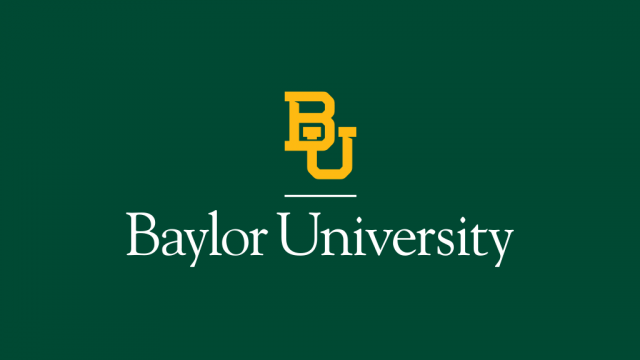Newswise — WACO, Texas (June 06, 2023) – In 1923, Austrian chemist Fritz Pregl was awarded the Nobel Prize in chemistry for his contributions to quantitative microanalysis as it became an essential tool to determine the elements present in a sample or compound. In chemistry, this technique is used to determine the identity and purity of a chemical while in geology, is used to determine the elements present in a mineral.
In fact, the method became so widely adopted that chemistry journals require this technique to publish any new compound. The standard of the value obtained being plus or minus of 0.4% of the formula value for a compound, as determined by elemental analysis, but is this long-accepted +/-0.4% standard accurate? Depending on the nature of the compound, element assessed, and identity of the trace impurities, the +/-0.4% requirement could be too high or too low, and that intrigued an international research team led by a Baylor University chemistry professor to conduct the first-ever review of the validity of the standard.
Caleb Martin, Ph.D., associate professor of chemistry and biochemistry at Baylor, set out in 2022 to determine if this publication standard is reasonable.
“The +/- 0.4% guideline for journals would actually require that some samples be 99.6% pure, without factoring in the error associated with measurement and what the trace impurities are,” Martin said. “Examining the literature, we have not been able to determine why +/- 0.4% was chosen as the standard requirement.”
The team’s study, An International Study Evaluating Elemental Analysis, was published in the journal ACS Central Science. In both of the two months following its publication in 2022, the study was the most read article in ASC Central Science and is still in the top 10 most-read list for the past 12 months, in addition to sparking conversations among journal editors and chemists with an overall positive response.
Third-party companies are typically used to conduct the testing and are not required to provide corroborating raw data for the results, leaving researchers with little information on why the sample did not make the grade. Additionally, there is no oversight to ensure the machines used to determine purity are calibrated correctly or accreditation mandated for staff.
Researchers may find themselves attempting to repurify and reanalyze compounds that are already of suitable purity for publication, only failing due to random error. Errors translate into delays in completing research, unnecessary expenses, and experimentalists being incorrectly blamed for inadequately purifying samples.
STUDY
The team sent identical samples of five organic compounds to 17 independent service providers from multiple countries and the in-house Chitnis Lab of team member, Saurabh S. Chitnis from Dalhousie University in Canada. Chitnis’s equipment was recently purchased and properly calibrated to ensure accuracy.
A simple technique,- the compound is burned and the combustion products analyzed to determine its makeup by percentage of carbon, hydrogen and nitrogen. The goal was to determine if there was deviation in measurement of each element beyond 0.4 % in an identical set of compounds at facilities worldwide. The results from the service providers were compared with the established theoretical value and results from Chitnis’s equipment.
Each individual analysis obtained for carbon, hydrogen and nitrogen was designated as a single data point. A data point was denoted “Fail” if it was not within 0.40% of the theoretical value and “Acceptable” if it was within 0.40% of the theoretical value as this is how scientific journals assess the data.
FINDINGS
The results from the labs validated the team’s concerns on accuracy and reliability. In fact, 10.78% of the data points for the commercial samples tested did not meet publication guidelines despite being adequately pure.
Graduate student Kanika Vashisth, who worked with Dr. Martin on the study found the results unexpected. “It was quite surprising to obtain the failure results for commercially available compounds that are greater than 99.9 % pure.”
“It is clear that 0.4% purity standard is not a statistically realistic journal requirement for synthetic samples, Martin said. “Since our study, no one has been able to shed light on why the accepted standard has been +/- 0.4% for many decades.”
STUDY IMPACT
As a result of their work, Chemistry-A European Journal and their sister journals under the Wiley publishing group have updated their guidelines to no longer include the 0.4% standard and have options when elemental analysis can’t be done. Other journals are reevaluating their requirements with this article stemming editorial addresses to the community.
“We received a great response from the scientific community. Researchers are finding it quite an interesting study,” said Vashisth. “It raised a reasonable question which is worth looking at.”
Martin and his team acknowledge there is more work to be done but are hopeful this work will bring about positive change.
“We hope our study causes journals to reevaluate their threshold and requirements for elemental analyses and educates reviewers that determine whether a peer-reviewed article is published about the false-failure rate. More broadly, we hope this inspires younger generation scientists to ask what their data means. We are grateful the National Science Foundation and Welch Foundation for supporting for this unusual study.” Martin said.
ABOUT THE AUTHORS
- Corresponding Authors
- Rupert E. H. Kuveke- Department of Mathematical and Physical Sciences, La Trobe University, Australia
- Saurabh S. Chitnis- Department of Chemistry, Dalhousie University, Canada
- Jason L. Dutton- Department of Biochemistry and Chemistry, La Trobe Institute for Molecular Science, La Trobe University, Australia
- Caleb D. Martin- Department of Chemistry and Biochemistry, Baylor University, United States
- Rebecca L. Melen- Cardiff Catalysis Institute, School of Chemistry, Cardiff University, Cardiff, Wales
- Authors
- Lachlan Barwise- Department of Biochemistry and Chemistry, La Trobe Institute for Molecular Science, La Trobe University, Australia
- Yara van Ingen- Cardiff Catalysis Institute, School of Chemistry, Cardiff University, Cardiff, Wales
- Kanika Vashisth- Department of Chemistry and Biochemistry, Baylor University, United States
- Nicholas Roberts- Department of Chemistry, Dalhousie University, Canada
